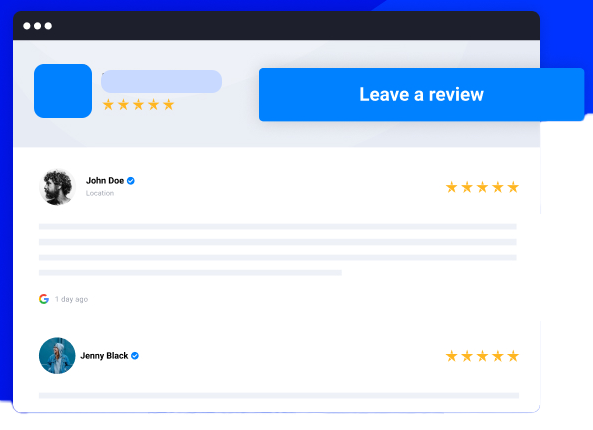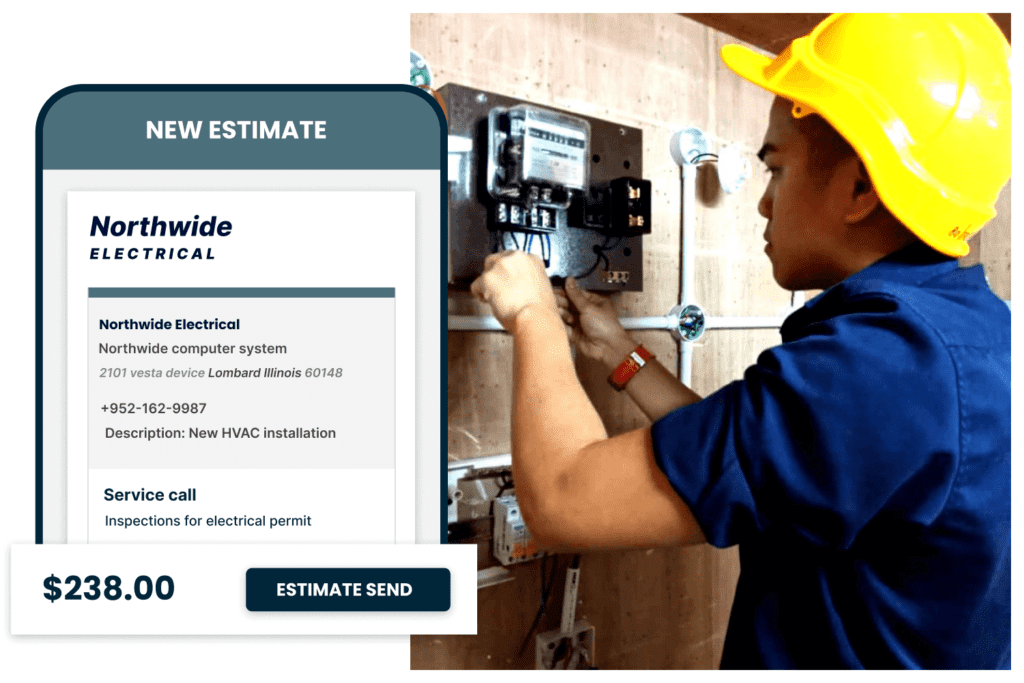If you are reading this blog, you are most likely to work in field service or own a business in the same industry. More likely, you are looking for a suitable software solution to automate your business.
Since you are here, it also means you are well-aware of the incredible benefits of field maintenance software and want all of them for your business. Yes, this smart digital tool is a life-saver when it comes to simplifying business processes, adding efficiency, increasing productivity, and saving hundreds and thousands of dollars in overhead costs. But the buck does not stop here. The advantages of this software go well beyond your imagination and can transform your business to heights you never thought were possible.
Take Your Business to Its Peak with Field Promax Field Maintenance Software. Sign Up Now.
But the problem is— there are simply too many options available right now. The marketplace is practically overflowing with maintenance software companies of all kinds. Whether it is a small, medium, or large organization, there is not just one but at least a handful of brands that claim to be the ideal solution for you. They promise unbelievable features or tempting deals, which makes them hard to ignore.
This, as one would expect, makes the task of choosing the right software solution really challenging. Especially if you are new to all this technological pot-pourri, this may seem all too confusing and daunting.
Even if you are tech-savvy and well-aware of the basic features of a maintenance management software program, you should be choosing carefully amidst all these claims and promises. After all, it is your hard-earned money, and you should get the best value for it.
In either case, choosing the right software requires careful consideration and some precise know-how. And that’s exactly what we are here to help you with.
In this blog, we will explain the fundamentals of choosing the ideal maintenance software for your business in a few simple steps. Also, we will give you some useful pointers as to what you should look for in the software before you make the decision. Following the tips, we hope you will be able to find the right digital tool that enhances your business to its fullest potential and that gives you the best value for your money.
So let’s jump right in without further ado.
1. Define Your Goals and Objectives

Every business is different, and so are their technological needs. Therefore, before you make your choice in a specific field maintenance software, try to identify your needs first.
To pinpoint your organization’s requirements, start by assessing and reviewing your current maintenance process. Try to identify any existing insufficiencies or challenges. To this end, you might consider the following factors:
- Or organization’s size
- Types of your assets
- Number of procedures and tasks you need to manage on a daily basis
- Current work order flow
- Current software capabilities
- Specific regulations or requirements that you need to comply with
- Any special factors that you face during daily operations
Once you have your specific needs figured out, consider the goals you want to achieve with your maintenance software. Some of the common goals for field maintenance organizations in terms of using software solutions include increasing their asset lifespan, improving efficiency, reducing downtime, and, of course, cutting operational costs.
Other than these, you may have some specific requirements. Figure that out before you make a decision so that the tool helps you resolve that issue at the same time while benefiting your common goals. Or else, you will have to invest in another tool, incurring more costs and facing more hassles. This is not at all a feasible solution.
Once you have these criteria sorted out, look for a software solution that addresses all your concerns. Use the goals as a guideline for the evaluation of your chosen software options. Choose the one that best meets your needs.
Field Promax Gives You Tailor-made Customization Options at the Best Price. Book A Free Demo to Find Out How It Works Best for You.
2. Create A Shortlist for Potential Options

Start by doing some research and evaluating various possibilities in light of the aforementioned criteria. Once you’ve narrowed down your list of software choices, ask for demos or samples of each one so you can see how it actually works.
Make sure you give the software vendor particular details about your organization’s needs and objectives. Knowing this, the seller can better adapt the demo to what you want. After the demo, you should have a solid grasp of whether and how the maintenance inventory management software can assist your maintenance operations.
At this point, go ahead and make a shortlist of your potential software alternatives using this information. You should now have a basis for additional consideration and decision-making.
3. Check for the Fundamentals

Once you have your shortlisted software options, conduct thorough research and compare the products for the following features and services:
i) Ease of Use
Select a software solution that has a user-friendly interface, clear instructions, and is simple to use and navigate. Your maintenance technicians will find it simpler to adapt and utilize the program on a daily basis as a result.
ii) Necessary Capabilities
Make sure the software offers the functions and features your business requires to effectively automate its unique maintenance objectives. This might have options like work order management, reporting and analysis tools, asset management, and preventive maintenance.
iii) Reliability
Be sure to choose a software program with a solid track record of reliability and uptime. This will make it easier for your repair activities to go off seamlessly, without any disruptions.
iv) Cost
Compare the prices of various software packages, taking into account any upfront licensing charges and continuing subscription payments. To decide if the price is reasonable, take into account the software’s possible advantages and how it might assist your firm in achieving its objectives.
v) Support and Training
Pick a software provider that provides thorough support and training materials, including online guides, user manuals, and technical support. This will ensure that your technician team is able to utilize the program properly and will assist them in becoming familiar with it.
4. Compare the Costs and Benefits of the Options

Now that you have sorted your chosen software programs and narrowed down your options for the best maintenance software, compare their overall costs and benefits to see which one is offering the best deal.
The price of the software may also include the cost of establishing and instructing your team on how to use it, as well as one-time license fees and continuing subscription payments. Examine the costs in relation to the advantages that the program might offer, such as increased asset lifecycle, decreased downtime, and better maintenance efficiency.
Create a budget for the software that accounts for both one-time and ongoing expenses. Take into account the software’s long-term cost, which includes any required software or hardware upgrades, ongoing training, and maintenance.
5. See Reviews and Case Studies

When you shop online, you never buy a product without consulting the reviews first. Then why should it be any different when purchasing software?
There are dozens of online platforms, websites, and social media pages that review software and digital tools. Find out the most authentic and reliable site to check what they are saying about the software you made up your mind about signing up for. Even better, check for customer reviews given by people who have actually used the software for their own businesses.
You can also directly ask the software vendor for references and case studies.
References are typically other organizations that have used the software and can provide feedback on their experience with it. By speaking with these organizations, you can get a sense of how the software has performed in a real-world setting and how it has helped the organization achieve its goals.
Case studies are in-depth reports or documents that provide detailed information about how the software has been used by other organizations and the benefits it has provided. These can be valuable sources of information. They can provide specific examples of how the software has helped organizations improve their maintenance operations and achieve their goals.
Overall, asking for references and case studies can provide valuable insights into how the software has worked for other organizations and can help you make an informed decision about whether it is the right choice for your organization.
6. Sign Up for A Trial

At this point, you must have pinpointed a specific software that meets all your requirements and criteria. But wait, don’t hit the “pay now” button just yet!
Before you start shelling out money, make sure you watch the software in action. It’s never enough to go by mere words. Unless you see the actual operation and how it fits with your operation, you can never be sure if you have made the right choice.
Therefore, as the final step before you make the purchase, sign up for a trial. Most leading field maintenance software programs offer a 7-day, 14-day, or month-long free trial period.
Besides, with brands like Field Promax, you don’t even need to put in your credit card details to sign up. It’s easy, convenient, and thoroughly transparent. What’s more, you get a free demo to help you understand better before you sign up, and then you can start the trial period at your convenience, no ifs and buts!
7. Features Your Chosen Field Maintenance software Must Have

By now, you know how to choose the right software for your business. But before you go ahead and make that decision for your company, let us quickly go over another important aspect, if not the most important one!
No matter how well-designed the software is or how lucrative the deal they are offering you is, the investment will go to waste if it does not serve the specific purpose of streamlining and standardizing your business processes. To this end, there are some crucial features that your chosen software must have. They are as follows:
i) Work Order Management
You should be able to create, assign, and track work orders in the field maintenance software, as well as view their statuses and the resources assigned to them. When implemented correctly, a consistent work order process aids mechanics, asset managers, and maintenance teams in staying on top of operations to boost productivity.
A work order management system is one of the most crucial SOPs a business can have when it comes to the maintenance department. In the contemporary global economy, equipment dependability is crucial for success. You could say that reliable business operations depend on work order systems!
ii) Inventory and Equipment Management
Given the size of your business, the software system must offer effective inventory and equipment management. The top field service companies maintain and manage their inventory using inventory systems and management, from placing buy orders to monitoring points of sale and part usage. Inventory accuracy is essential in today’s market, given the difficulties in the supply chain.
Your team members will be better able to make independent decisions if they can quickly recognize the assets you have, their locations, and their values.
iii) Reporting and Analysis
You should be able to track key performance indicators and make data-driven choices regarding your maintenance operations using the software’s real-time key performance indicator (KPI) dashboards, thorough reports, and analytical tools. You can track equipment downtime, MTTR, MTBF, and OEE, to mention a few crucial KPIs, with reporting.
iv) Third-party Integration
For a smooth and effective workflow, the software should be able to link via API with other systems, such as your company’s ERP or CRM systems. Can you connect your accounting system to your purchase orders? Can you link your billing with your customer database?
For example, Field Promax eliminates the need for Excel files and paper copies. It facilitates the paperless transition of your operations. It supports a two-way sync with QuickBooks so that you can use the same customer data to perform an array of tasks, including work order management, predictive maintenance, sending quotes, billing, and invoicing, among other things.
Final Thoughts

Overall, field maintenance software should provide tools and capabilities to manage and optimize your maintenance operations, support your organization’s unique maintenance processes and goals, and streamline facility management activities. Your CMMS scheduling capabilities should easily transition your maintenance operations from proactive maintenance to reactive maintenance.
When you research any software option, define your goals in mind before you make your decision.
If you are still confused and seek a simpler solution, go for Field Promax. It is a smart, cloud-based field management software solution that is perfectly customizable for field maintenance. The upside– you can enjoy a far wider array of features and functionalities with this one, including dynamic scheduling and dispatch, real-time GPS monitoring, an embedded mobile app for your technicians, color-coded multiple calendar views, a comprehensive dashboard for easy work order management, and so on.
For More Information, contact Field Promax .
Originally Published on our website - FIeld Promax (Best Field Maintenance Software)




